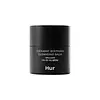What's inside
What's inside
 Key Ingredients
Key Ingredients

 Benefits
Benefits

 Concerns
Concerns

 Ingredients Side-by-side
Ingredients Side-by-side

Caprylic/Capric Triglyceride
MaskingC13-15 Alkane
SolventPEG-20 Glyceryl Triisostearate
EmollientRicinus Communis Seed Oil
MaskingHelianthus Annuus Seed Oil
EmollientSynthetic Wax
AbrasiveSilica Dimethyl Silylate
EmollientPolysorbate 85
EmulsifyingOryza Sativa Extract
AbsorbentSalvia Hispanica Seed Extract
EmollientCastanea Crenata Shell Extract
Skin ConditioningDipropylene Glycol
Humectant1,2-Hexanediol
Skin ConditioningTrihydroxystearin
Skin ConditioningTocopheryl Acetate
AntioxidantPentaerythrityl Tetra-Di-T-Butyl Hydroxyhydrocinnamate
AntioxidantWater
Skin ConditioningButylene Glycol
HumectantCI 77499
Cosmetic ColorantCaprylic/Capric Triglyceride, C13-15 Alkane, PEG-20 Glyceryl Triisostearate, Ricinus Communis Seed Oil, Helianthus Annuus Seed Oil, Synthetic Wax, Silica Dimethyl Silylate, Polysorbate 85, Oryza Sativa Extract, Salvia Hispanica Seed Extract, Castanea Crenata Shell Extract, Dipropylene Glycol, 1,2-Hexanediol, Trihydroxystearin, Tocopheryl Acetate, Pentaerythrityl Tetra-Di-T-Butyl Hydroxyhydrocinnamate, Water, Butylene Glycol, CI 77499
Ethylhexyl Palmitate
EmollientCetyl Ethylhexanoate
EmollientPEG-20 Glyceryl Triisostearate
EmollientCaprylic/Capric Triglyceride
MaskingSynthetic Wax
AbrasivePolyglyceryl-6 Dicaprate
EmulsifyingPEG-8 Glyceryl Isostearate
EmollientWater
Skin ConditioningMicrocrystalline Wax
Emulsion StabilisingPhenoxyethanol
PreservativeTriethyl Citrate
MaskingLavandula Angustifolia Oil
MaskingRosmarinus Officinalis Leaf Oil
MaskingJuniperus Virginiana Oil
MaskingPelargonium Graveolens Oil
MaskingButylene Glycol
HumectantPanthenol
Skin ConditioningTocopheryl Acetate
AntioxidantDipteryx Odorata Bean Extract
MaskingPolianthes Tuberosa Extract
MaskingCitrus Reticulata Peel Extract
Skin ConditioningPhellodendron Amurense Bark Extract
Skin ConditioningEthylhexyl Palmitate, Cetyl Ethylhexanoate, PEG-20 Glyceryl Triisostearate, Caprylic/Capric Triglyceride, Synthetic Wax, Polyglyceryl-6 Dicaprate, PEG-8 Glyceryl Isostearate, Water, Microcrystalline Wax, Phenoxyethanol, Triethyl Citrate, Lavandula Angustifolia Oil, Rosmarinus Officinalis Leaf Oil, Juniperus Virginiana Oil, Pelargonium Graveolens Oil, Butylene Glycol, Panthenol, Tocopheryl Acetate, Dipteryx Odorata Bean Extract, Polianthes Tuberosa Extract, Citrus Reticulata Peel Extract, Phellodendron Amurense Bark Extract
 Reviews
Reviews

Ingredients Explained
These ingredients are found in both products.
Ingredients higher up in an ingredient list are typically present in a larger amount.
Butylene Glycol (or BG) is used within cosmetic products for a few different reasons:
Overall, Butylene Glycol is a safe and well-rounded ingredient that works well with other ingredients.
Though this ingredient works well with most skin types, some people with sensitive skin may experience a reaction such as allergic rashes, closed comedones, or itchiness.
Learn more about Butylene GlycolThis ingredient is an emollient, solvent, and texture enhancer. It is considered a skin-softener by helping the skin prevent moisture loss.
It helps thicken a product's formula and makes it easier to spread by dissolving clumping compounds.
Caprylic Triglyceride is made by combining glycerin with coconut oil, forming a clear liquid.
While there is an assumption Caprylic Triglyceride can clog pores due to it being derived from coconut oil, there is no research supporting this.
Learn more about Caprylic/Capric TriglyceridePeg-20 Glyceryl Triisostearate comes from Isostearic Acid and glycerin.
It is an emollient, emulsifier, and gentle cleanser. As an emollient, it helps trap moisture to keep skin soft and hydrated. Emulsifiers help prevent ingredients from separating.
This ingredient is common in oil-based products. This is because it helps oil-ingredients be easily washed away without leaving a residue.
Peg-20 Glyceryl Triisostearate may not be fungal-acne safe.
Learn more about PEG-20 Glyceryl TriisostearateSynthetic Wax is created from fossil fuels such as natural gas. It is used to enhance texture, adjust pH, and as an occlusive.
It may also be used as an abrasive ingredient to exfoliate the skin.
Synthetic Wax may not be fungal acne safe.
Learn more about Synthetic WaxTocopheryl Acetate is AKA Vitamin E. It is an antioxidant and protects your skin from free radicals. Free radicals damage the skin by breaking down collagen.
One study found using Tocopheryl Acetate with Vitamin C decreased the number of sunburned cells.
Tocopheryl Acetate is commonly found in both skincare and dietary supplements.
Learn more about Tocopheryl AcetateWater. It's the most common cosmetic ingredient of all. You'll usually see it at the top of ingredient lists, meaning that it makes up the largest part of the product.
So why is it so popular? Water most often acts as a solvent - this means that it helps dissolve other ingredients into the formulation.
You'll also recognize water as that liquid we all need to stay alive. If you see this, drink a glass of water. Stay hydrated!
Learn more about Water